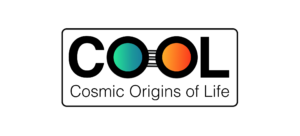From 2016 to 2020 I worked on my PhD thesis at the University of Florence/INAF-Osservatorio Astrofisico di Arcetri. The research work I have done during the last 4 years was dedicated to the study of isotopic fractionation of molecules in massive star-forming regions located across the Milky Way. Isotopic abundance ratios provide unique independent constraints to the models of the formation and evolution of galaxies. Isotopic ratios measured from molecular abundances in interstellar molecular clouds depend on local chemical fractionation effects, and also on the chemical evolution of the galaxy due to stellar nucleosynthesis. In particular, I studied nitrogen (N), carbon (C) and hydrogen (H) isotope abundance ratios, both from an observational and a theoretical point of view, and their link with (i) the Solar System, (ii) the environment in which the Sun was created, and (iii) the entire Galaxy. To perform these studies, I have analysed observations of massive star-forming regions with both single-dish (Colzi et al. 2018a,b) and interferometer (Colzi et al. 2019) telescopes, and compared these results with chemical models (Colzi et al. 2020).
From last year I started a postdoc here at CAB, and I also begin to study more complex organic molecules (COMs) related with the origin of life, which can be observed towards star-forming regions thanks to the current advanced astronomical facilities. Isotopic fractionation of such species could give important clues on the way in which these COMs can be formed, such as through gas-phase reactions or in the surface of interstellar grains.
ORCID: 0000-0001-8064-6394
| Palabras clave | astrochemistry, isotopic ratios, chemical fractionation, chemical modelling, galactic chemical evolution, star formation, analysis software, astrochemical surveys, prebiotic chemistry |







